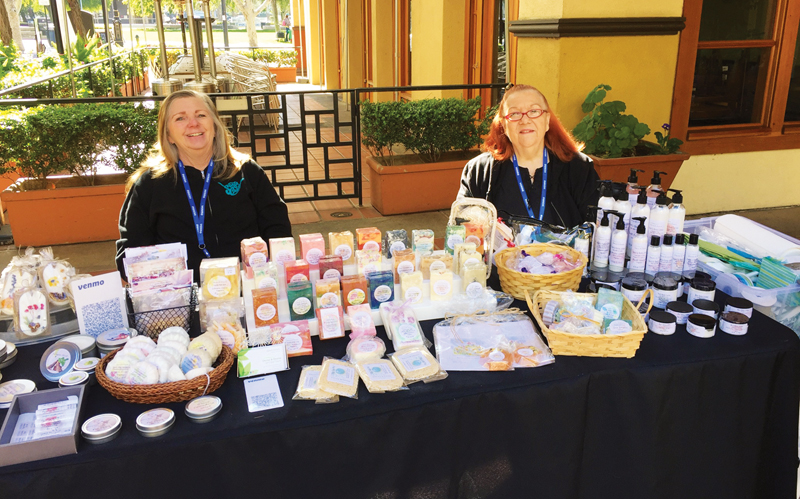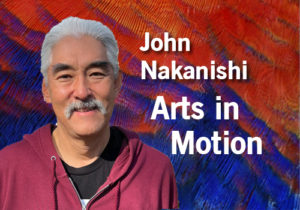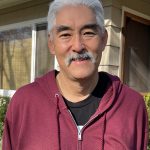
Soap artisans Deena and Donna enjoy the sweet smell of success

 SAN FRANCISCO EAST BAY AREA, CA (June 19, 2022) — Those who frequent local art and craft events or popup shows have likely met Deena Sheranko and Donna Langner with their collection of soaps, lotions and bath supplies.
SAN FRANCISCO EAST BAY AREA, CA (June 19, 2022) — Those who frequent local art and craft events or popup shows have likely met Deena Sheranko and Donna Langner with their collection of soaps, lotions and bath supplies.
With their artistic look and pleasing scents, their products make great gifts or a special treat for yourself.
I knew very little about soapmaking until I met Sheranko, but I soon discovered that soapmaking requires not only an artistic sense of design but also an understanding of science. Artisan soaps, for example, are made by mixing oils and butters with sodium hydroxide (lye) to create an exothermic chemical reaction called “saponification.”
There are safety considerations as well, including the use of personal protective equipment such as goggles and gloves.
Some like it hot
Sheranko and Langner offer both “artisan” and “handcrafted” soaps.
Artisan soaps can be made by hot-press or cold-press. For the hot-press process (Sheranko’s preference), they heat the soap in a slow cooker through the saponification reaction. They add colors and fragrance after the cook but before the soap cools and hardens in the pot. They then put the batter into molds. Hot-press soaps can take two weeks to cure before they are ready to use.
For the cold-press process, they add colors and fragrance with the oils and then pour the soap into a mold. It may take several days before it can be cut into bars or unmolded. The soaps needs to cure for eight to ten weeks so excess water evaporates, leaving the soap harder and milder. True castile soap made with 100% olive oil can take up to a year to cure.
Handcrafted soaps follow a different process, using premade bases. These are called “melt-and-pour” or glycerin soaps.
“The bases I buy are made by SFIC locally in Concord and are considered the best, most natural on the market,” Sheranko says. “They have been making soap bases since 1967. They do not use artificial detergents or surfactants. I cut the base into cubes, melt slowly in my microwave, then add color and fragrance before pouring into my molds. It hardens and is ready to be cut and used in a few hours. I let my soaps rest for a day or two before wrapping, assuring they are fully hardened. No additional cure is needed.”
A happy accident
Sheranko and Langner began working together in 2011, when they did a holiday gift project for elementary school students. They decided it would be easy for the kids to add fragrance and color to liquid soap base.
“We actually found our best-selling fragrance, Butt Naked, from this project,” says Sheranko.
They launched the business of Deena & Donna in 2012, selling to teachers at Langner’s school and at local events. In 2014, they began offering their products in local retail shops.
Their best-selling fragrances are Butt Naked, Cherry Blossom, Oatmeal Milk & Honey and Goji Berry-Tarocco Orange. Deena & Donna also sells lotions, candles, and other bath and household items.
To see their product offerings as well as to learn more about soapmaking, visit deenaanddonna.com.
Email comments and suggestions for future columns to phjona@gmail.com.

John Nakanishi
John Nakanishi is treasurer of The Concord Art Association. He is an acrylic painter and a ceramic artist. When John isn’t creating art, he coaches soccer for East Bay Eclipse, a competitive soccer club based in Moraga. He is also an avid trail runner, enjoying runs from 5 miles to 50K.
